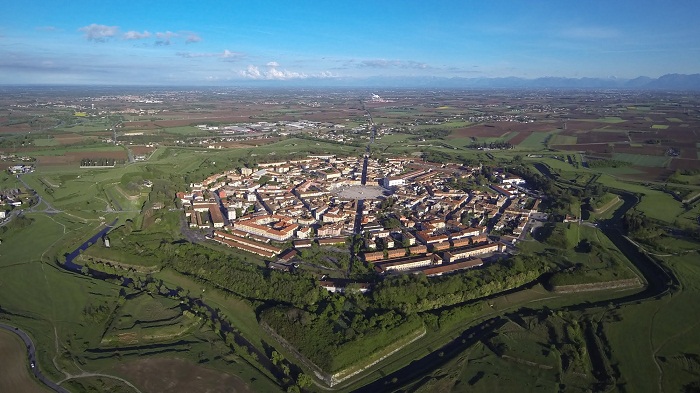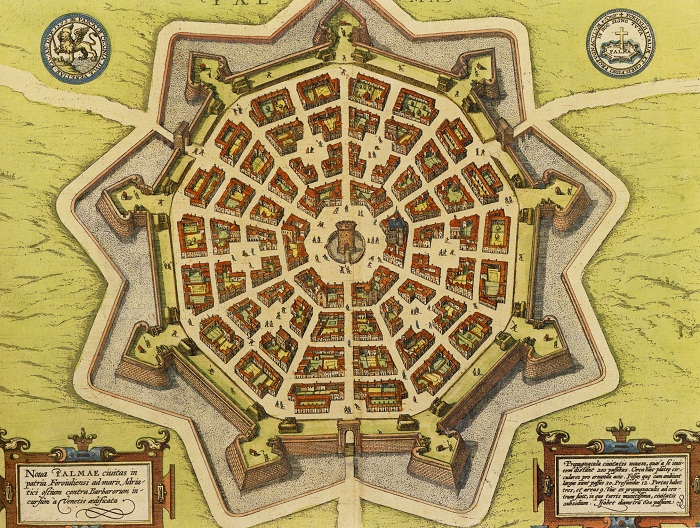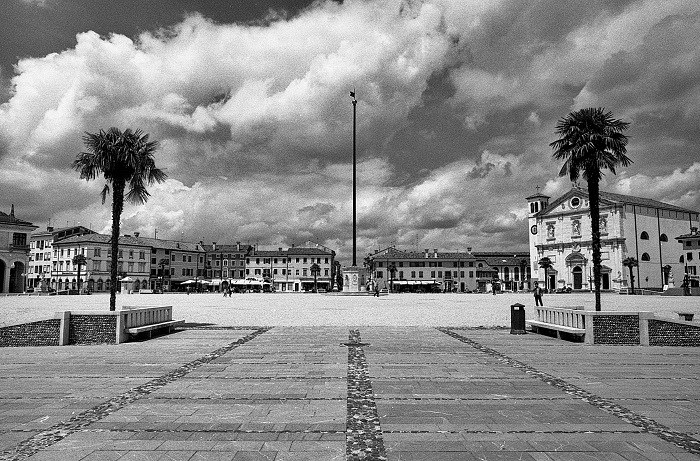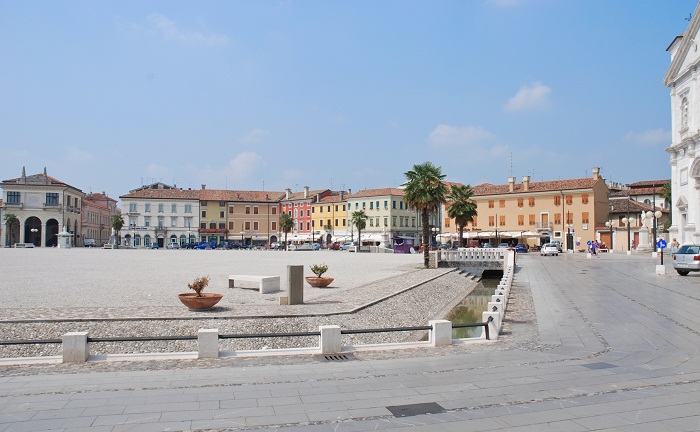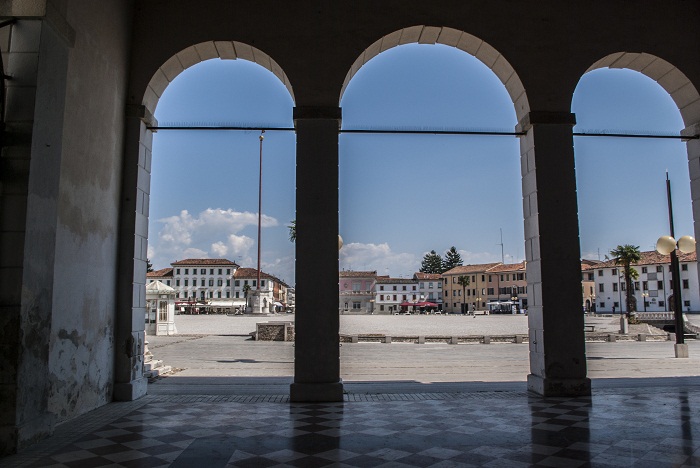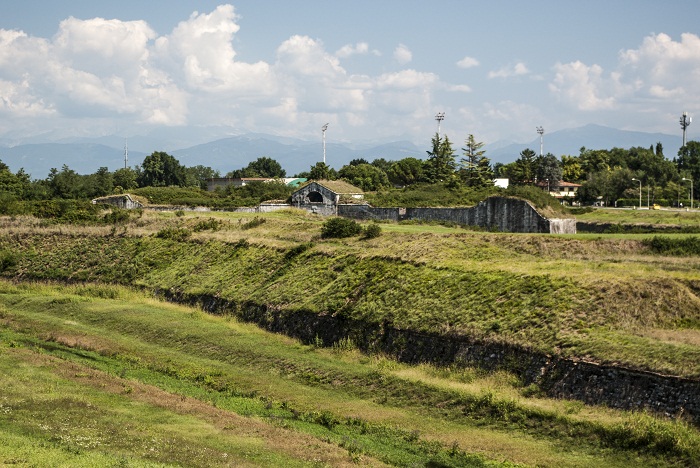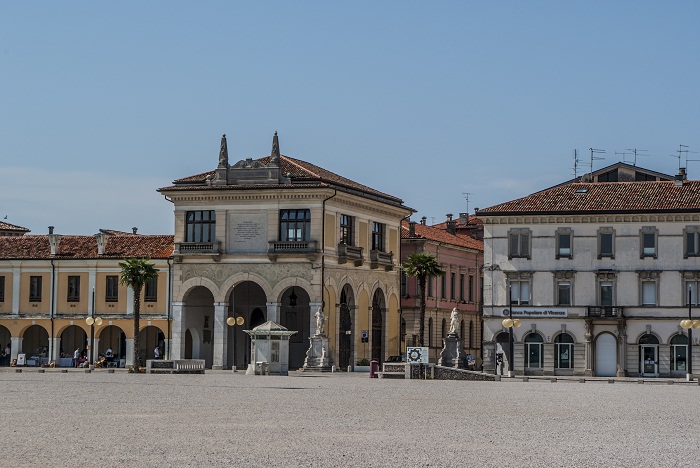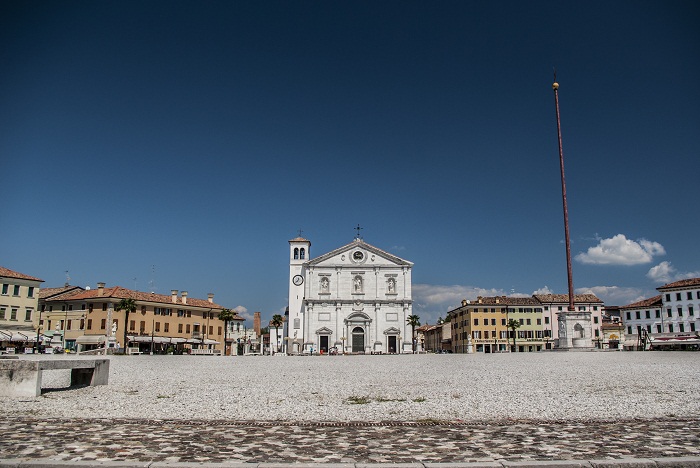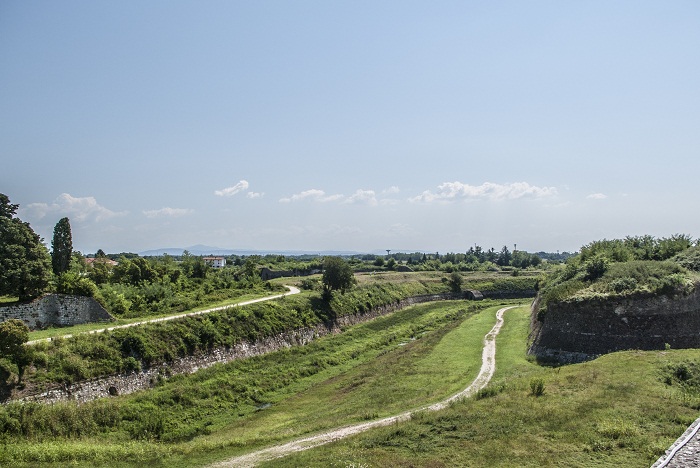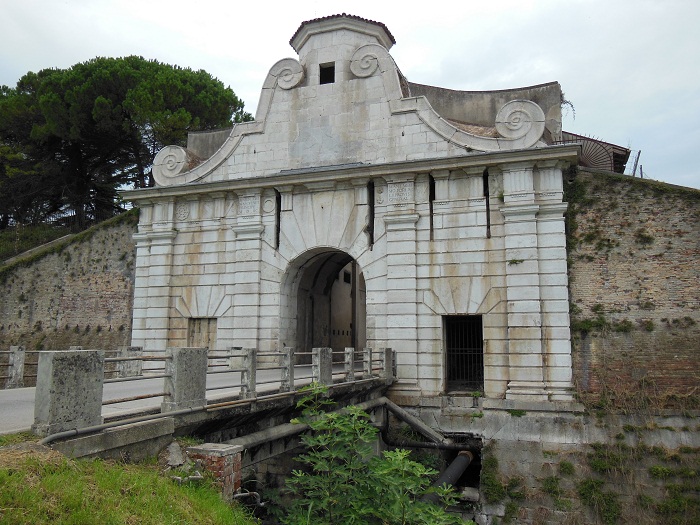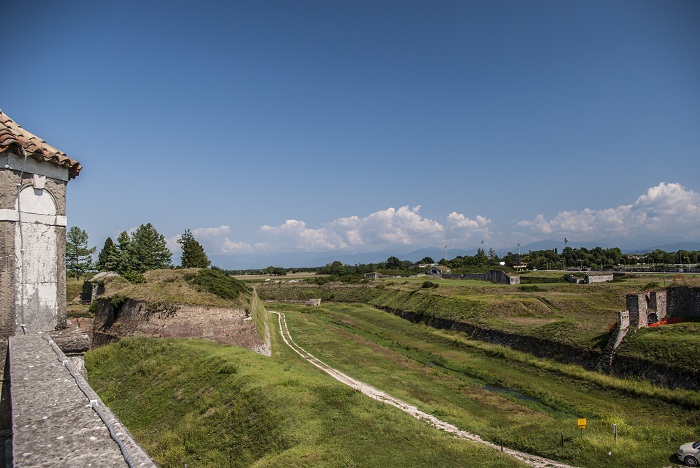Palmanova is a fortress town and commune located in northeastern part of Italy, close to the border with Slovenia. As one of the better examples of star fortification of the late Renaissance, it was built in 1593, by the Venetians.
As it is one of the more important and better preserved examples of military architecture as well, it was built due to the several Ottoman raids from the Balkan Peninsula, and also to give refuge to people when there were dangers from other invaders.
Built in a concentric star formation, consisting of three rings which were built in stages, the entire town is enclosed in a circular area. The circular shape of Palmanova was greatly influenced by the fact that it needed to be a fort.
At the time of its construction, many other urban theoreticians found the checkerboard was more useful, but it could not provide the protection that military architects desired. The walls of a practical fort are run at angles so that enemy soldiers could not approach it easily because the angles made it possible to establish overlapping fields of fire.
The most important feature of the fort is the perfectly shaped hexagon piazza, where the most important buildings are located; the Cathedral and the Civic History Museum. It is under protection by UNESCO, and many people like to visit this small and charming town, which speaks history through its walls.

